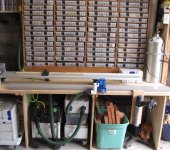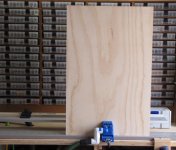Since it has been mentioned, the 110 is available from the manufacturer at $675.00, or in a “professional” package for 1,100.00.
From a marketing point of view, Castle is in a tough spot. Their obvious demographic is those Kreg customers moving up for higher productivity. But most Kreg customers seem positive about Kreg products. They are well-designed and work as they are supposed to. And they are priced reasonably. The one hit they take is their extensive use of plastics. They do use metal components, but their products are basically injection molded. I went with th P-C unit because it was almost entirely made from cast and machined aluminum. Old-timers like me feel more comfortable using machines made of metal.
So Castle is trying to canibalise the Kreg customer base, and those customers are by and large happy with Kreg products and Kreg (corporate). Add to that, that is their machines cost more, and they are painted into the corner. (Oh, and did I mention, Kreg’s customer service is excellent.




